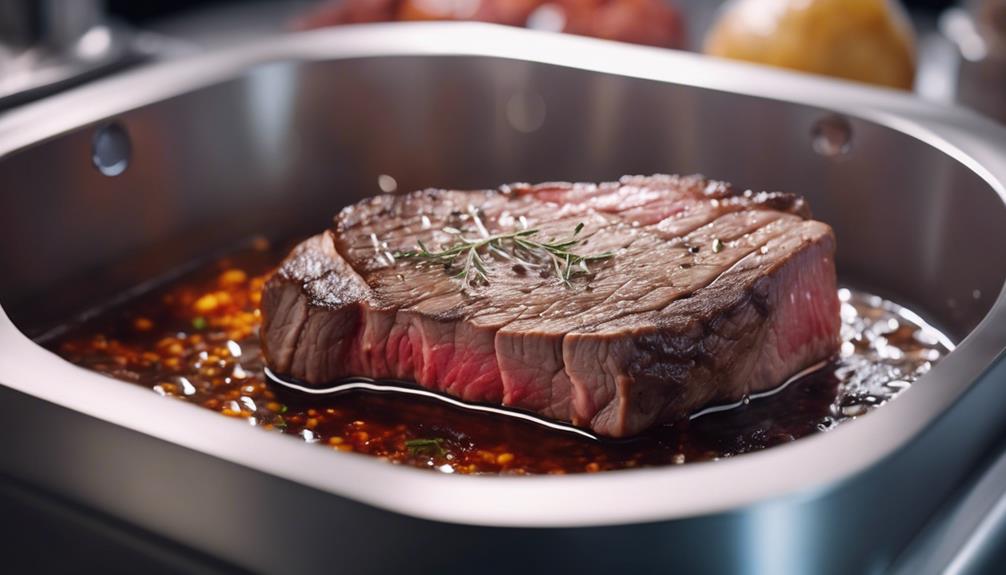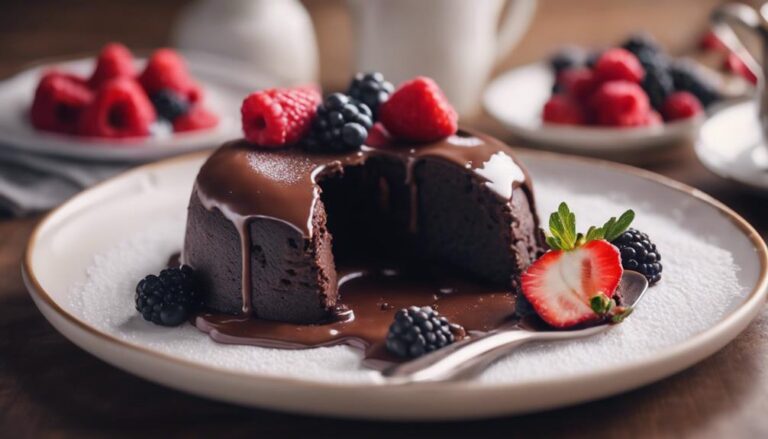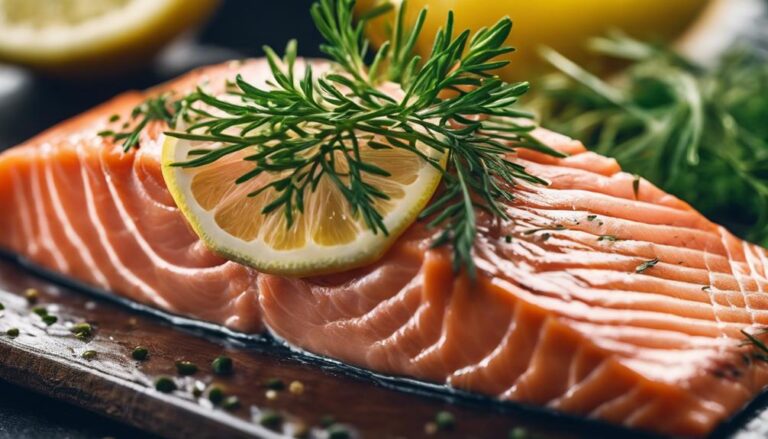Why Sous Vide Beef Cooking Times and Temperatures?
Mastering the ideal cooking times and temperatures for sous vide beef is essential. This precision guarantees your steak is safe, flavorful, and cooked perfectly every time. Each cut requires specific guidelines to secure tenderness and taste. Understanding temperature control is key to eliminating harmful bacteria. Consistency in cooking temperatures results in evenly cooked beef. Adjusting time impacts the texture and juiciness you desire. Following these guidelines promise a delicious outcome.
What You Will Learn Here
- Precise times and temperatures ensure safe, tender, and flavorful sous vide steak.
- Accurate cooking eliminates harmful pathogens and ensures even cooking from edge to edge.
- Understanding doneness levels and temperatures impacts tenderness, juiciness, and flavor.
- Proper temperature control is essential for beef safety and consistent results.
- Following guidelines minimizes contamination risks and guarantees perfect beef cooking outcomes.
Importance of Sous Vide Beef Guidelines
Understanding the importance of following sous vide beef guidelines is essential for achieving safe and perfectly cooked results every time. When cooking sous vide steak, precise cooking time and temperature are key. Sous vide cooking allows for precise control over the doneness of the meat by cooking it at a specific temperature for a set amount of time. This precision cooking method guarantees that the beef is cooked evenly from edge to edge, resulting in a perfectly cooked steak every time.
For a home cook, mastering the temperature range and cooking times for sous vide steak is vital. Different cuts of meat require specific cooking temperatures and times to achieve the desired level of doneness and texture. By following sous vide beef guidelines, you can be confident that your steak isn't only safe to eat but also tender and flavorful. Precision cooking with sous vide guarantees consistent results, making it a favorite method among chefs and home cooks alike.
Safety in Sous Vide Beef Cooking
You need to understand that maintaining accurate temperatures is essential for ensuring the safety of your sous vide beef.
The cooking time is just as significant as the temperature to eliminate harmful pathogens effectively.
Remember that following recommended guidelines reduces the risk of foodborne illnesses, especially for vulnerable individuals.
Temperature for Safety
Maintaining precise cooking temperatures is essential for guaranteeing the safety of sous vide beef. It eliminates harmful pathogens and assures the desired doneness. Different cuts of beef require specific temperature ranges to guarantee safe consumption and eliminate foodborne illness risks.
Precision in sous vide cooking temperatures is vital to achieve the desired level of doneness while ensuring food safety. Following recommended sous vide beef cooking temperatures minimizes the risk of undercooking or bacterial contamination.
Properly cooked beef at the right temperature ensures a safe and enjoyable dining experience with sous vide cooking methods. Remember, precise temperature control is key to both safety and taste when cooking sous vide beef.
Cooking Time Importance
To guarantee the safety of your sous vide beef cooking, focusing on the importance of cooking time is essential. Cooking time plays a critical role in sous vide beef preparation by ensuring that the beef reaches the recommended internal temperature for pathogen elimination.
Different cuts of beef require specific cooking times to achieve the desired level of doneness while maintaining food safety standards. Adhering to proper cooking times not only eliminates potential health risks associated with undercooking but also helps preserve the quality and texture of the meat.
Precision in following cooking times is key to a successful and safe culinary experience when cooking sous vide beef. Remember, accurate timing is fundamental for both safety and the delicious outcome you aim to achieve.
Precision in Beef Temperature Control
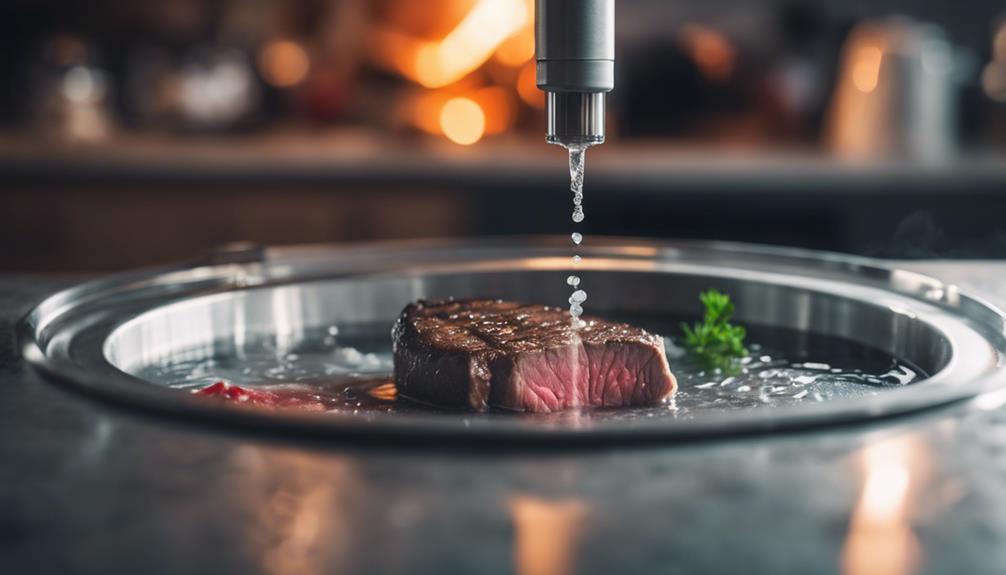
Achieving precise beef temperature control is crucial for ensuring the desired levels of doneness when cooking sous vide. When it comes to precision in beef temperature control, here are some essential points to take into account:
- Consistency: Maintaining a consistent temperature throughout the cooking process guarantees that your beef is evenly cooked, preventing any parts from being undercooked or overcooked.
- Food Safety: Accurate temperature control eliminates harmful bacteria, making your sous vide beef not only delicious but also safe to eat.
- Marbling Matters: Different beef cuts have varying levels of marbling, which means they may require different temperatures to achieve the perfect texture and flavor.
Achieving Desired Beef Doneness
To achieve your desired level of beef doneness, it's vital to understand the different levels of doneness and their corresponding temperatures.
By cooking sous vide, you can precisely control the internal temperature, ensuring consistent results each time.
Remember that adjusting the cooking time alongside the temperature can impact the tenderness, juiciness, and overall doneness of your beef.
Doneness Levels Explained
Wondering how to achieve your desired beef doneness? Here's a breakdown of the different levels to help you serve the perfect steak:
- Rare: Cook your steak at 120°F (49°C) to 128°F (53°C) for a tender, juicy texture and deep red color.
- Medium-rare: Achieve a reddish-pink center with a slightly firmer texture by cooking at 129°F (54°C) to 134°F (57°C).
- Medium: Cook your beef to temperatures of 135°F (57°C) to 144°F (62°C) for a pink center and more firm texture.
Each temperature range provides a different level of doneness, allowing you to cater to individual preferences. Serve up the perfect steak every time with precise cooking temperatures!
Precision in Cooking
Achieving your desired beef doneness through precise cooking is all about maintaining specific internal temperatures with sous vide cooking. Sous vide cooking guarantees that different beef cuts reach their ideal doneness by using specific time and temperature combinations. This precision eliminates the risk of overcooking or undercooking your beef, providing consistent and delicious results every time.
Temperature Control Importance
Maintaining precise temperature control is essential for achieving your desired beef doneness when using sous vide cooking techniques.
- Accurate temperatures: Ensuring the water bath stays at the exact temperature specified for the beef cut guarantees perfect doneness.
- Flexibility in cooking: Sous vide allows for a wider window of cooking times, giving you the flexibility to achieve the exact texture you desire.
- Flavorful beef: By maintaining temperatures accurately, you lock in the juices and flavors, resulting in tender and flavorful beef every time.
Pathogen Elimination in Beef
To guarantee the safety of your sous vide beef, it is essential to grasp the critical process of pathogen elimination. When cooking beef sous vide, precise control over temperatures and times is key to ensuring harmful pathogens like E. coli and Salmonella are effectively eliminated. Beef must reach a minimum internal temperature to guarantee the destruction of these bacteria, keeping your dish safe for consumption. Sous vide cooking provides the perfect environment for pathogen elimination in beef due to the accurate temperature control it offers. By following recommended guidelines for cooking beef sous vide, you not only assure the safety of your meal but also reduce the risk of foodborne illnesses.
| Pathogen Elimination in Beef | |
|---|---|
| Factors | Importance |
| Specific Temperatures | Ensure pathogens are killed |
| Precise Cooking Times | Critical for eliminating bacteria |
| Recommended Guidelines | Guarantee safe consumption |
Sous Vide Beef Flavor Enhancement
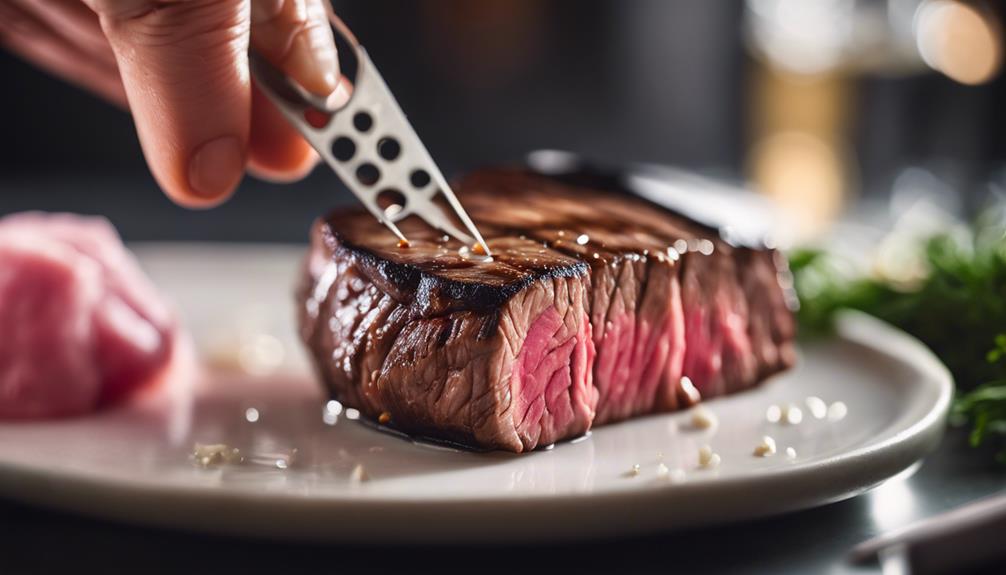
When looking to elevate the taste of your sous vide beef, focusing on flavor enhancement techniques can truly amplify your culinary experience.
- Marinating: Preparing your beef with flavorful marinades before sous vide cooking can deeply enhance its taste profile.
- Controlled Cooking: Sous vide guarantees precise temperatures and controlled cooking times, resulting in consistently tender and juicy beef.
- Retention of Flavors: By sealing in juices and preventing moisture loss, sous vide cooking allows your beef to maintain its natural flavors without the risk of overcooking.
These techniques not only bring out the best in your beef but also ensure a delicious and satisfying dining experience for those you serve.
Maintaining Beef Safety Standards
Adhering to specific temperatures is important for guaranteeing beef safety standards during sous vide cooking. When cooking beef sous vide, it's essential to follow recommended cooking times and temperatures to eliminate any harmful pathogens that may be present.
Proper handling and careful sourcing of beef are vital factors that directly impact the safety of your sous vide cooking process. After cooking, rapid cooling of the beef is necessary to prevent bacterial growth and guarantee it stays safe for consumption.
To maintain beef safety standards, it's important to use food-grade bags specifically designed for sous vide cooking and follow all recommended safety measures. These precautions help minimize the risks of contamination and ensure that your beef remains safe to eat.
Perfect Results With Beef Cooking Times
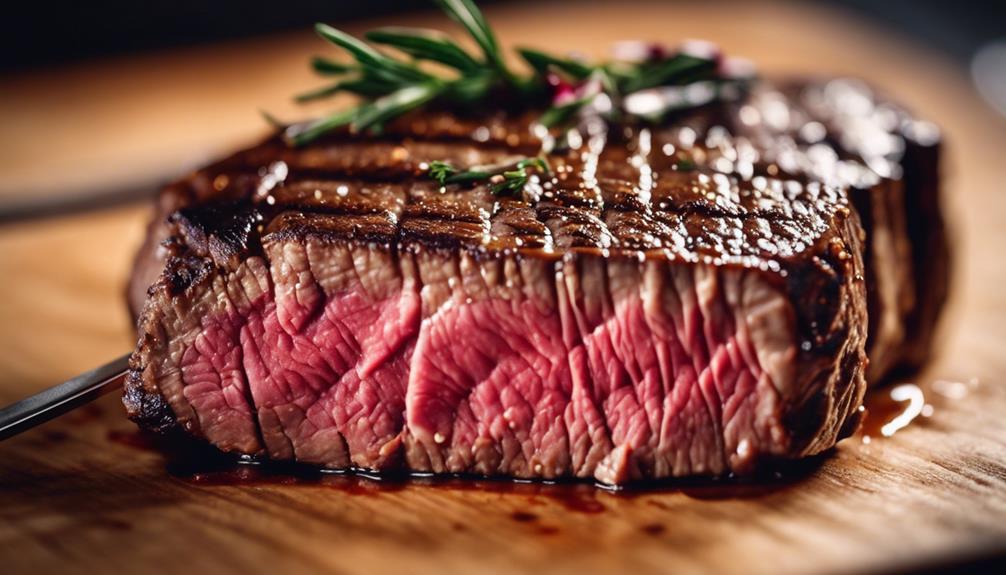
For achieving perfect results with beef cooking times, precision is key in sous vide preparation. When it comes to serving others, mastering the art of sous vide cooking for beef is essential. Here are some tips to help you achieve perfection:
- Precision Matters: Follow recommended cooking times and temperatures meticulously.
- Consider Doneness: Understand the desired level of doneness for your beef to guarantee it meets expectations.
- Factor in Thickness and Fat Content: Adjust cooking times and temperatures based on the thickness and fat content of the beef cut you're using.
Frequently Asked Questions
What Is the Best Temperature for Sous Vide Beef?
For the best sous vide beef, aim for rare at 120°F and well-done at 160°F. Tenderloin stays juicy at lower temps, while ribeye shines with a sear. Experiment with marinades, seasonings, and searing for flavorful results.
Why Do Sous Vide Cooking Times Vary so Much?
When you sous vide, cooking times vary due to factors like meat tenderness, texture control, and flavor infusion. It's about achieving temperature consistency, juiciness retention, and nutrient preservation. Embrace the precision cooking benefits for time efficiency.
What Is the Best Temperature for Sous Vide Cooking?
For ultimate tenderness, aim for a sous vide beef temperature that fits your desired doneness. Precision cooking at the perfect temperature guarantees consistent results, juicy texture, and enhanced flavors. Let sous vide work its magic for culinary creativity.
How Do I Know How Long to Cook Sous Vide?
For your sous vide cooking, determine the ideal time by considering factors like meat cuts, desired texture, and seasoning options. Using precise temperatures and dependable recipes guarantees flavorful, juicy results. Utilize sous vide equipment for consistent cooking.
Conclusion
So next time you're cooking beef sous vide, remember to follow the guidelines for ideal safety, precision, and flavor.
By controlling the temperature and cooking time, you can achieve the perfect doneness and eliminate any potential pathogens.
With sous vide cooking, you can enjoy tender, juicy beef every time.
Stay safe, stay precise, and enjoy delicious results with sous vide beef cooking times and temperatures.
